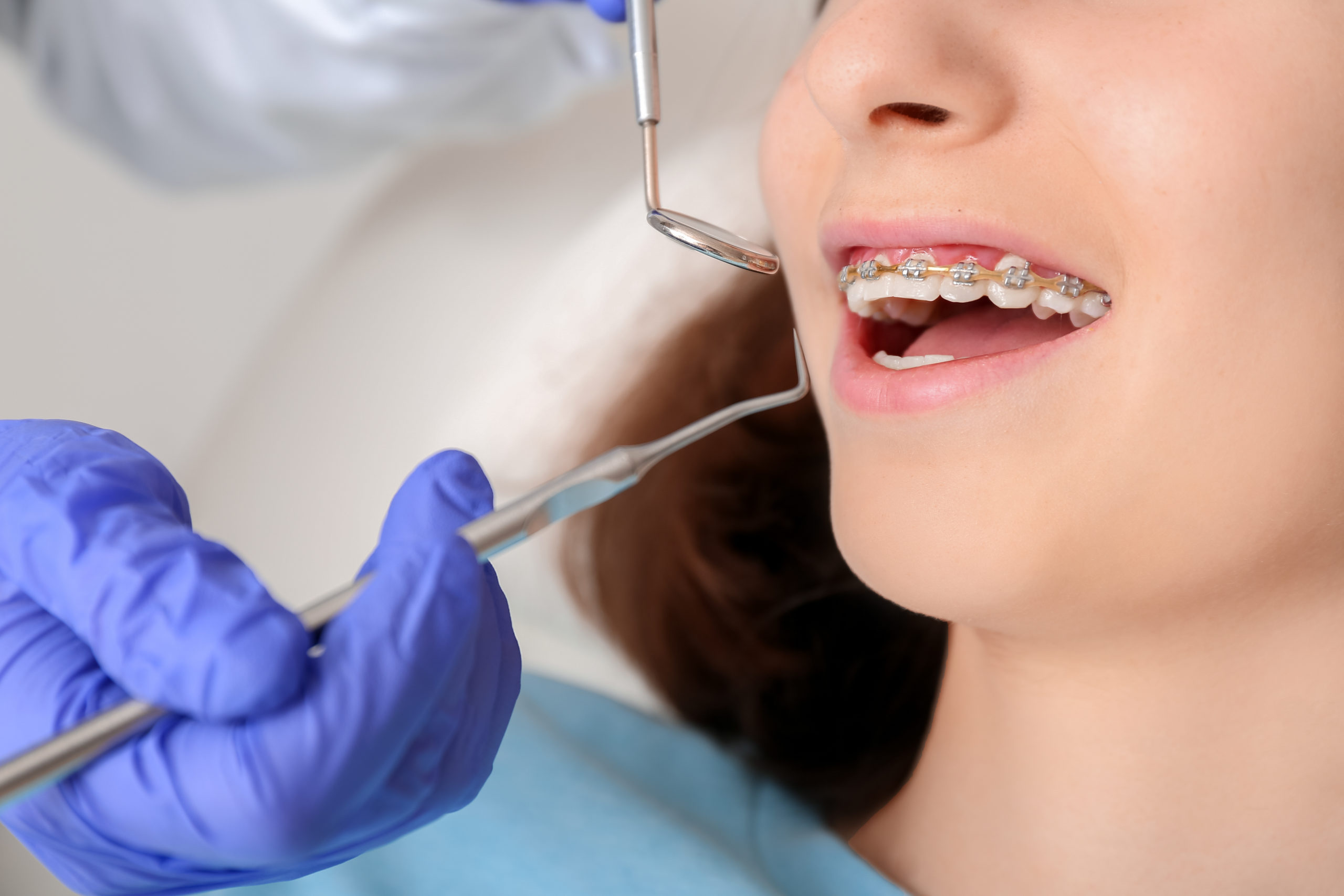Comprehensive Overview to Orthodontics Procedures for Dealing With Dental Misalignments
In the world of orthodontics, the trip to achieving a completely straightened smile includes a myriad of treatments customized to deal with dental misalignments. From standard braces to undetectable aligners and also medical options, the field of orthodontics uses a series of services to attend to differing levels of dental abnormalities. Recognizing the complexities of each procedure, including their systems, advantages, and possible downsides, is critical in making informed decisions about one's orthodontic treatment. As we navigate through the extensive overview to orthodontic procedures for correcting dental misalignments, the intricate information of each technique will unfold, clarifying the path toward a harmonious and functional oral positioning.
Orthodontic Procedures Review

Routine changes and monitoring are vital components of orthodontic therapy to guarantee progression is on track and to make any kind of necessary modifications along the method. By going through orthodontic treatments, individuals can not just achieve a straighter smile but also enhance their general oral health and feature.
Standard Dental Braces: Just How They Function
When taking into consideration orthodontic treatments for dental imbalances, standard braces stand out as a reliable technique for fixing teeth positioning. Typical braces consist of braces, wires, and bands that interact to apply continual pressure on the teeth, gradually relocating them into the preferred alignment. The brackets are affixed to the teeth using a special adhesive, and the cords are threaded through the braces. By readjusting the tension of the cords, orthodontists can manage the instructions and force put on each tooth, guiding them right into correct alignment gradually.
As stress is used to the teeth via the dental braces, the bone bordering the teeth is improved to sustain the brand-new tooth placements. People will certainly need regular adjustments at the orthodontist's office to guarantee the braces continue to apply the proper stress for effective teeth movement.
Unnoticeable Aligners: Pros and Disadvantages
Undetectable aligners use a very discreet and practical alternative to conventional braces for remedying oral imbalances. These clear, tailor-made trays are essentially undetectable when used, making them an appealing option for individuals seeking an extra aesthetically pleasing orthodontic treatment. One of the primary advantages of undetectable aligners is their removability, enabling simpler maintenance of dental hygiene compared to standard braces. Patients can get rid of the aligners before eating or cleaning their teeth, lowering the danger of food obtaining embeded the home appliance and simplifying the cleansing process.

Surgical Orthodontic Options
Surgical treatments in orthodontics existing viable options for dealing with complicated dental misalignments that may not be efficiently solved with conventional orthodontic treatments. While standard braces and unnoticeable aligners can fix many orthodontic concerns, particular instances need surgical intervention to attain optimum outcomes. Surgical orthodontic options are normally suggested for serious malocclusions, significant jaw discrepancies, and instances where the underlying bone framework needs modification to attain correct positioning.
One typical surgical orthodontic treatment is orthognathic surgical treatment, which involves rearranging the jaws to remedy practical problems such as trouble eating or speaking. This surgery is usually carried out in cooperation with an orthodontist that assists align the teeth prior to and after the procedure. Surgical orthodontics might likewise entail procedures to reveal impacted teeth, get rid of excess gum cells, or reshape the jawbone to develop a much more unified face profile.
Prior to thinking about medical orthodontic choices, individuals go through a detailed analysis to establish the need and possible benefits of such interventions. braces. While surgical treatment might appear difficult, it can dramatically improve both the feature and aesthetic appeals of the smile in cases where traditional orthodontic treatments fall short
Retainers and Post-Treatment Treatment

Post-treatment treatment involves complying with the orthodontist's directions diligently. This might consist of correct oral health techniques, attending follow-up appointments, and using the retainers as recommended. Failing to abide with post-treatment care instructions can lead to regression, where the teeth progressively return in the direction of their initial positions. Regular retainer wear, good dental hygiene, and normal oral exams are necessary for keeping the outcomes achieved via orthodontic surgery and making sure the long-term stability of the fixed dental placement.
Conclusion
In verdict, orthodontic procedures use porcelain dental veneers various alternatives for fixing oral misalignments. Surgical orthodontic alternatives are readily available for more severe misalignments. Overall, orthodontic procedures can effectively enhance oral health and wellness and visual look.
As we navigate via the useful source detailed overview to orthodontic procedures for dealing with oral misalignments, the complex information of each method will unravel, shedding light on the course toward a practical and unified dental positioning. - cumming aligners
One of the most common orthodontic therapies is the usage of dental braces, which are composed of steel brackets and wires that apply mild stress to progressively move teeth into the desired position.When thinking about orthodontic therapies for oral imbalances, traditional dental braces stand out as a tried and true method for remedying teeth placing. Additionally, undetectable aligners might not be appropriate for intricate orthodontic issues that call for even more significant teeth movement, as they are typically recommended for light to modest instances. Retainers are custom-made orthodontic devices designed to hold teeth in their fixed positions after the completion of orthodontic therapy.